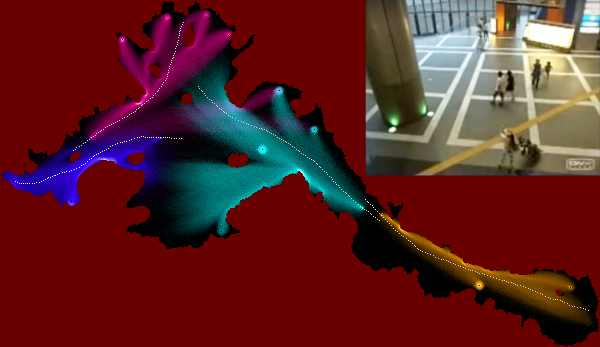Andrey Rudenko, Luigi Palmieri, and Kai Oliver Arras![]()
Joint Long-Term Prediction of Human Motion Using a Planning-Based Social Force Approach
to appear in IEEE International Conference on Robotics and Automation (ICRA) 2018

Abstract
The ability to perceive and predict future positions of dynamic objects is essential for mobile robots and intelligent vehicles in dynamic environments. In this paper, we present a novel planning-based approach for long-term human motion prediction that accounts for local interactions and can accurately predict joint motion of multiple agents. Long-term predictions are handled using an MDP formulation that computes a set of stochastic motion policies. To obtain distributions over future motion trajectories, we sample the policies with a weighted random walk algorithm in which each person is locally influenced by social forces from other nearby agents. Unlike related work, the algorithm is environment aware, can account for individual agent velocities, requires no training phase and makes joint predictions for multiple agents. Experiments in simulation and with real data show that our method makes more accurate predictions than two state-of-the-art methods in terms of probabilistic and geometrical performance measures.
@INPROCEEDINGS{rudenkoICRAPalmieri2018,
title={Joint Long-Term Prediction of Human Motion Using a Planning-Based Social Force Approach},
author={Rudenko, Andrey and Palmieri, Luigi and Arras, Kai Oliver},
booktitle={Proceedings of IEEE International Conference on Robotics and Automation (ICRA), Brisbane},
year={2018},
month=may,
}
